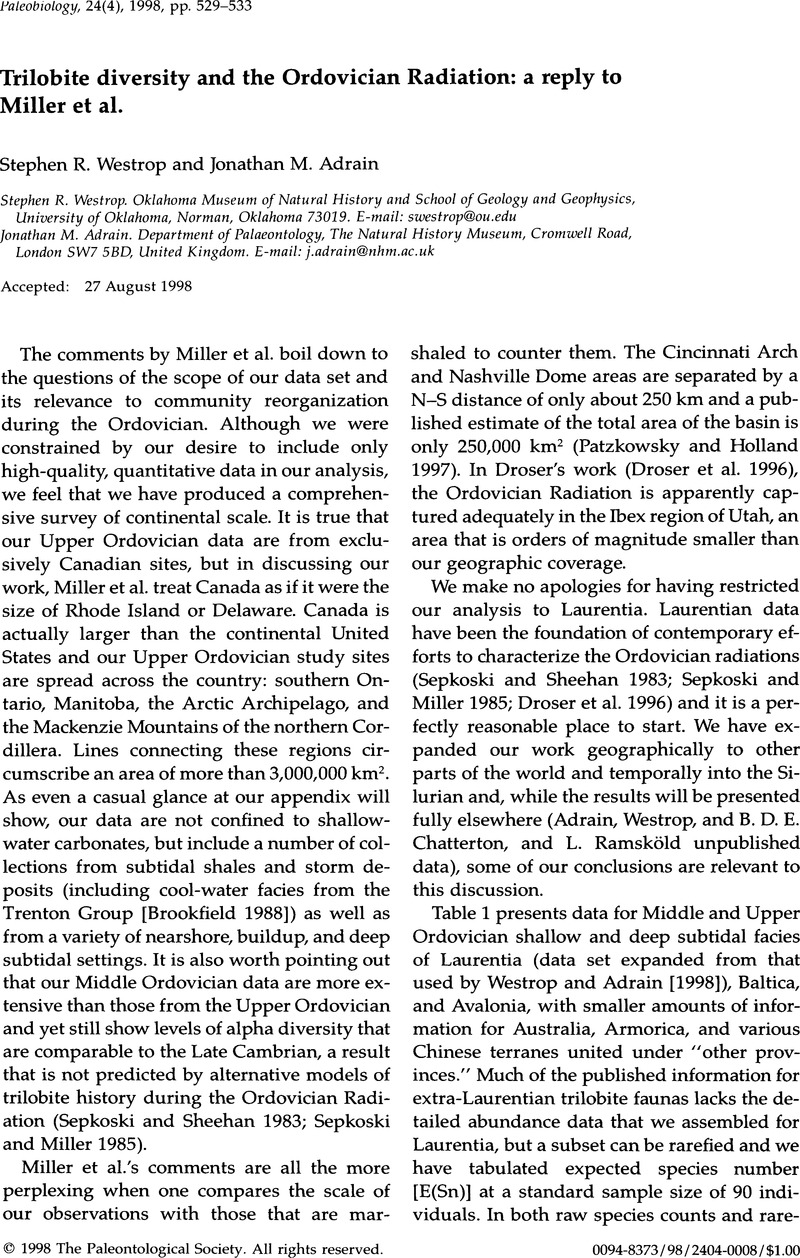Crossref Citations
This article has been cited by the following publications. This list is generated based on data provided by Crossref.
Adrain, Jonathan M.
Westrop, Stephen R.
Chatterton, Brian D. E.
and
Ramsköld, Lars
2000.
Silurian trilobite alpha diversity and the end-Ordovician mass extinction.
Paleobiology,
Vol. 26,
Issue. 4,
p.
625.
Finnegan, Seth
and
Droser, Mary L.
2005.
Relative and absolute abundance of trilobites and rhynchonelliform brachiopods across the Lower/Middle Ordovician boundary, eastern Basin and Range.
Paleobiology,
Vol. 31,
Issue. 3,
p.
480.
Finnegan, Seth
and
Droser, Mary L.
2008.
Body size, energetics, and the Ordovician restructuring of marine ecosystems.
Paleobiology,
Vol. 34,
Issue. 3,
p.
342.
Servais, Thomas
Owen, Alan W.
Harper, David A.T.
Kröger, Björn
and
Munnecke, Axel
2010.
The Great Ordovician Biodiversification Event (GOBE): The palaeoecological dimension.
Palaeogeography, Palaeoclimatology, Palaeoecology,
Vol. 294,
Issue. 3-4,
p.
99.



